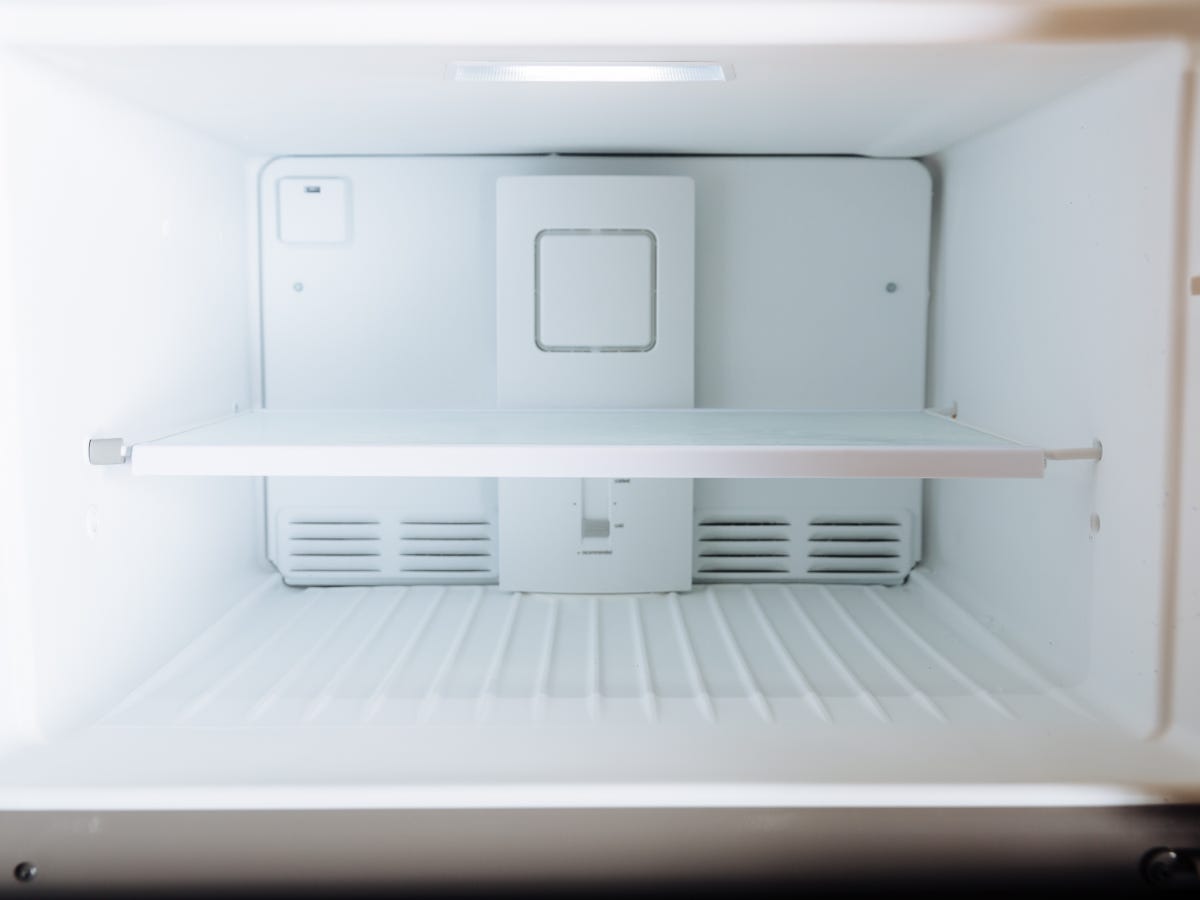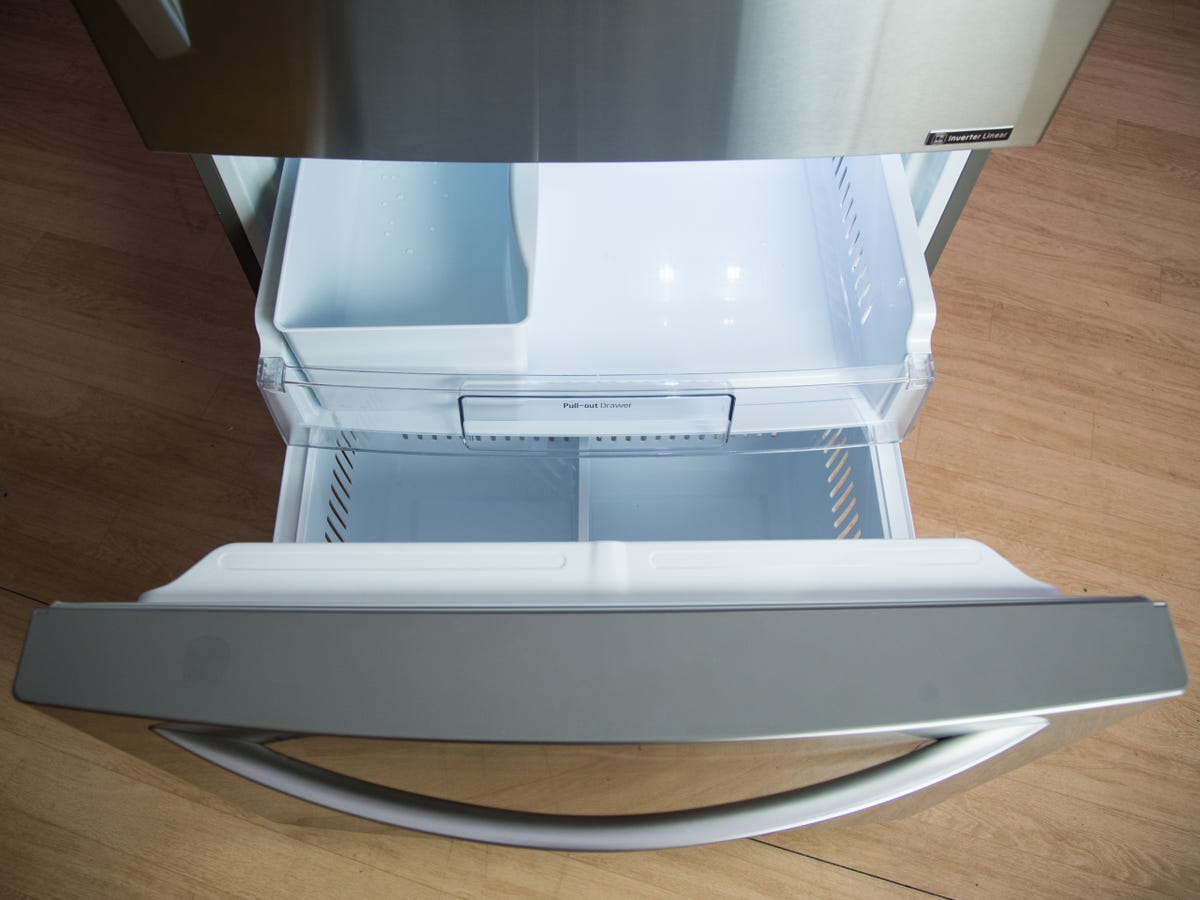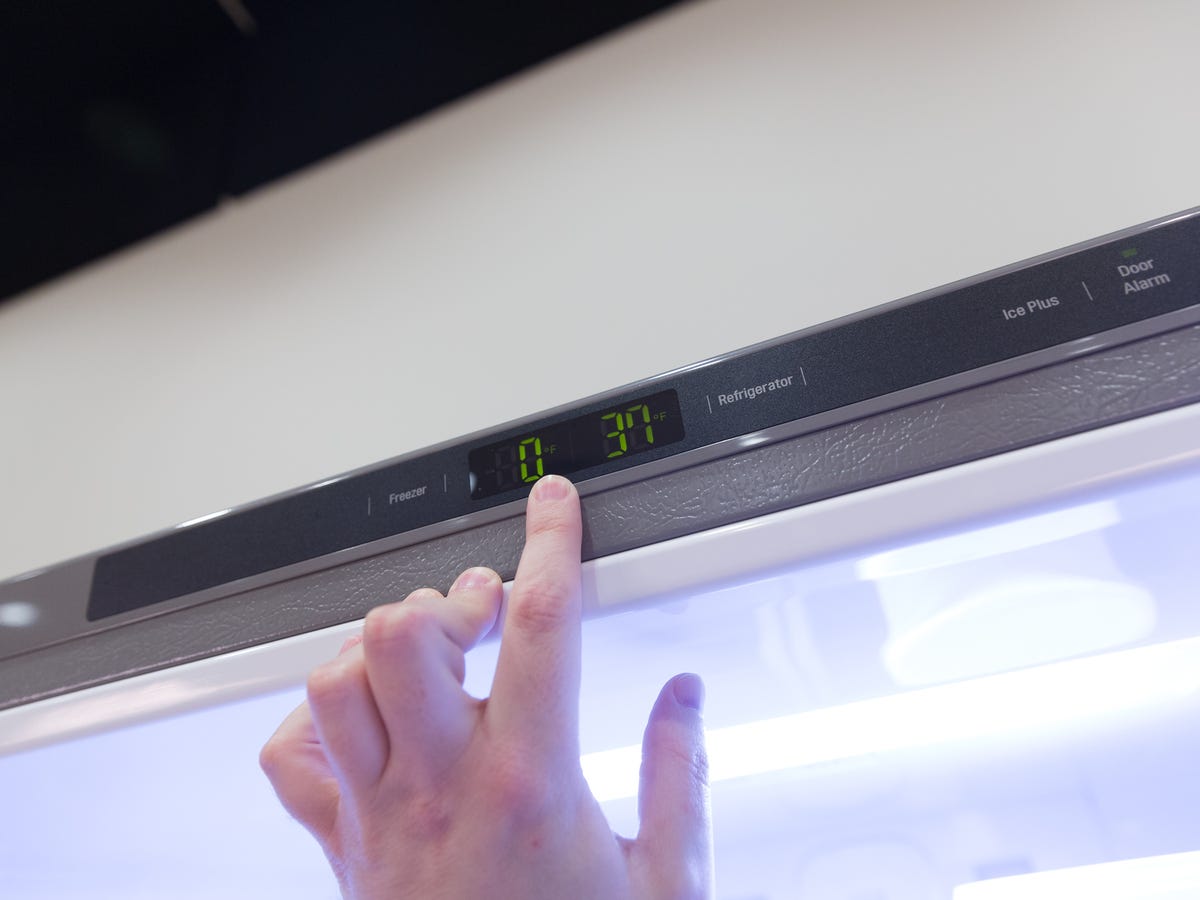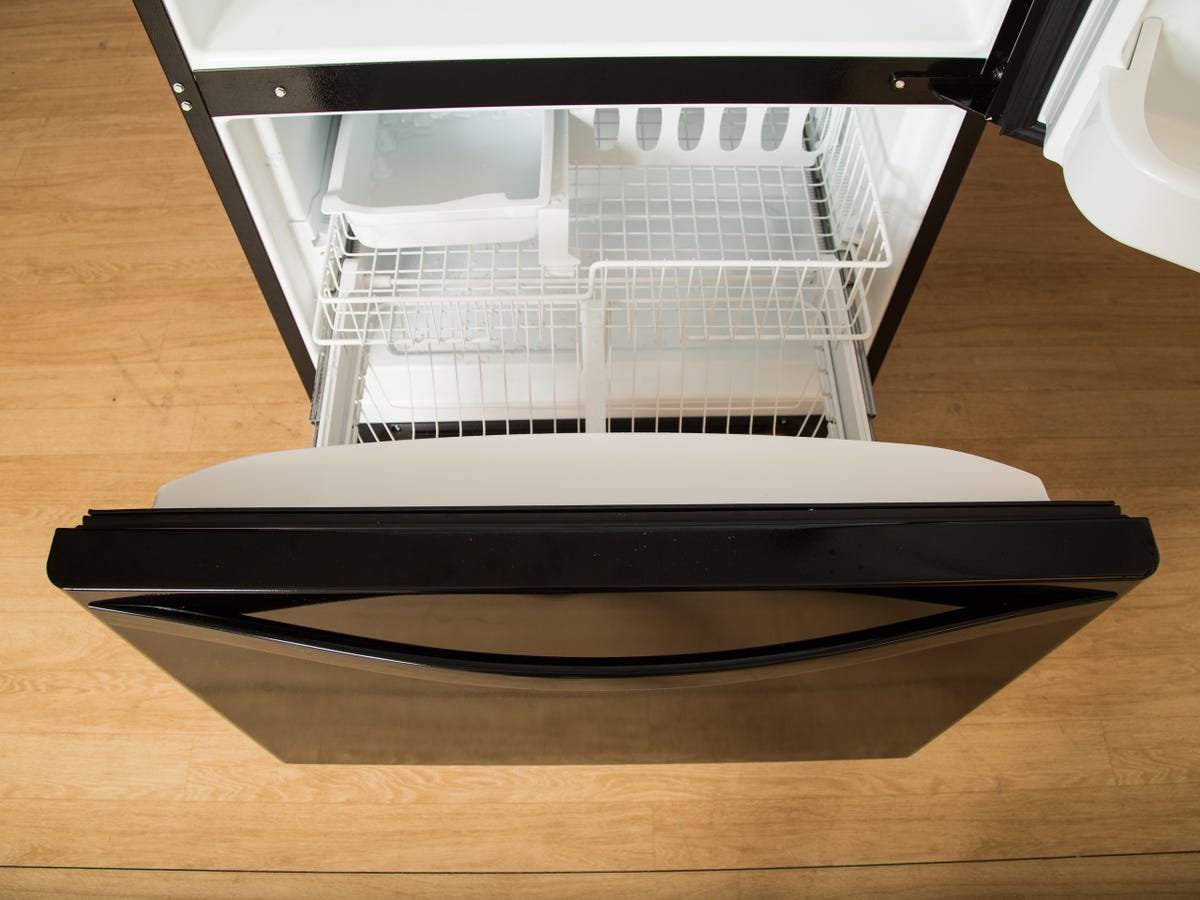A large and functional freezer is a must for anyone who buys in bulk to save money. While there are some foods you should never freeze, it’s the best place to keep reserves of meat, fish, smoothie fruit and ice cream. Lots of ice cream.
But be honest: Can you currently account for everything in your freezer? Worse yet, are you even able to get anything out of your freezer without causing a landslide of frostbitten peas and chocolate chips? If your freezer is busting at the seams from walls covered in ice and snow, it’s time to defrost.
And if you want a clean freezer. Like, a really clean freezer, defrosting is the only way you’re going to get it.
For more, we spoke with Trevor Craig, food safety expert at Microbac Laboratories. While the build-up of frost in a freezer can be partially attributed to overfilling, “freezers actually maintain temperature better when they’re full,” Craig says. Good news for apocalypse planners, but your freezer can get frosty for several reasons, which overfilling may exacerbate.
“Usually frost forms because moisture in the air that is trapped in the freezer condenses and freezes,” Craig says. An overfull freezer can prevent the freezer from sealing properly, which allows humidity to creep in.

A defrosted freezer is easy to clean.
While some frost buildup is inevitable, you can help stave it off by being mindful of the number of times you open and close the freezer door and making sure to first cool any items that are destined for the freezer. Hot foods put in the freezer will also create excess evaporation. Older freezers are also more prone to frost than newer ones.
Read more: Can You Guess Which Zones in Your Fridge Are the Coldest (and Warmest)?
Freezer efficiency and food safety
Making sure your refrigerator is running efficiently isn’t just good for your electricity bill, but it has implications for your health as well. “Heavily frosted freezers can burn out or fail to keep your food frozen,” Craig says. “If the food gets too warm, it’s not going to survive its full shelf life, and it might even be a health hazard if it doesn’t stay cold enough.”
Frost can also lead to unwanted and unexpected replacement costs, which is way more problematic than a slightly elevated electricity bill. According to Craig: “If heavy frost builds up, your freezer could even break, and then there is little option but to throw all the thawed food out,” he says, not to mention you have to potentially buy a new appliance.
How to defrost your freezer

Defrost a top or bottom freezer using the same steps.
Fortunately, defrosting your freezer is a relatively simple process, once you get past the trauma of having to confront what’s lurking in there. A little planning is the only requirement, especially if you do have a permanently well-stocked freezer.
Step 1: Remove all items from the freezer

Meat and other items riddled with freezer burn probably aren’t worth saving.
“Ideally, you should defrost your freezer when it is almost empty before you restock it,” Craig says, adding that you can tightly store your frozen items in a cooler during the process if needed. “If you defrost frequently enough, it shouldn’t take too long and you can keep everything frozen or cold until placing it back in.”
Step 2: Set your freezer to defrost or turn it down all the way

Turn the freezer all the way down or use the defrost setting if you have one.
Newer freezers often have a setting for defrosting, otherwise, you’re just turning the dial down to its off or lowest setting. (Note: Do not unplug the entire appliance, as we’re still trying to keep the items in the refrigerator cold during this process.)
Step 3: Let it sit until all the frost melts away

Once the freezer is dry, you can crank the temp back down and begin loading in items.
“Once you have everything out of the freezer and have it shut off or set to defrost it should only take a few hours if the frost isn’t bad, or about a day if it’s particularly bad,” Craig says. “You can keep the door open during this process to speed it along if that’s what the manufacturer recommends.
Step 4: Wipe it down
After it’s fully thawed, clean out any pooling water and wipe down all surfaces before starting up again.
The refrigerator cavity shouldn’t be threatened by the freezer defrost process, but you can put out some towels on the ledge of the fridge door, or on the floor, if you’re concerned about water leakage. If you do see leakage, it could be a sign that the seals on the freezer or fridge are damaged.
Step 5: Turn the dial back up to your preferred temp
Once the freezer is dry and cranked back up, you’re free to restock it with items for safekeeping.
Freezer maintenance and upkeep
Once you’ve ripped off the band-aid and defrosted your freezer, you can save yourself time (and perhaps money) in the future by staying on top of the process.
“You should defrost about once a year, or if you see the frost growing to thicker than about one-quarter of an inch,” Craig says. “It will make your freezer run better, keeping your food temperature and electric bill down.”
Defrosting your freezer isn’t only about facing your demons in the form of long-forgotten items that may have gotten freezer burned beyond repair or outlived their shelf life by a cringe amount of time. “Typically for me, there are a few popsicles or frozen Girl Scout cookies that I forgot about,” Craig says, “so I have a nice little snack while cleaning up.”
To defrost a chest freezer, you’ll want to take a slightly different approach. Here’s how to defrost a freestanding chef freezer in minutes.




















+ There are no comments
Add yours